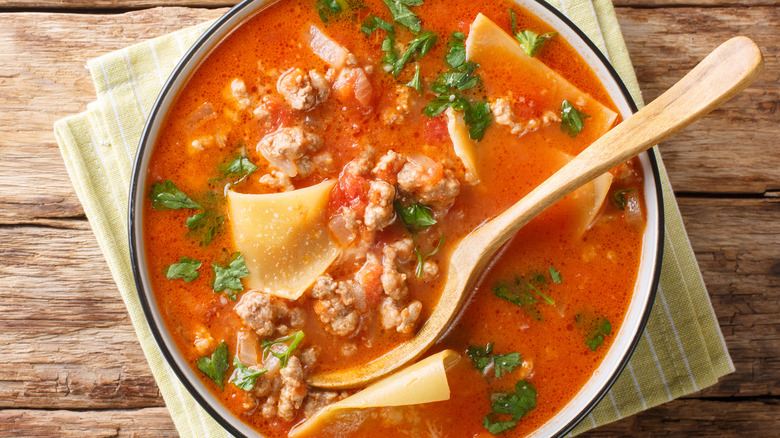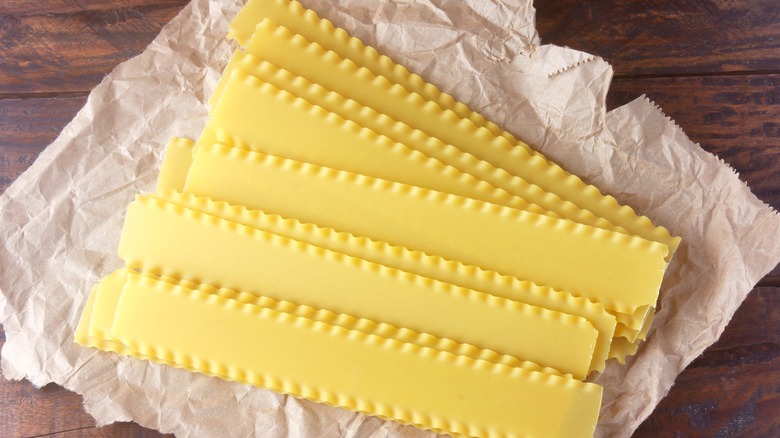Why You Should Consider Pre-Cooking The Noodles For Lasagna Soup
Lasagna soup is truly the best of both worlds — it provides you with all the flavors of the crave-worthy Italian classic without all the extra prep time to assemble it. But while many recipes use this as a one-pot meal, cooking the pasta with the other ingredients, that might not be the best way. After all, simmering for long periods of time can cause those broken sheets of lasagna noodles to overcook, which will negatively impact the texture. How do we prevent this? Add another pot into the mix for cooking those noodles separately.
The thing about pasta is that when it's cooked until al dente, it's great. But when you pass a certain point of overcooking, there is no way to save what is now mushy noodles with zero texture. If you're working on a lasagna soup recipe that you're planning to serve right away, tossing dry pasta into the mix is perfectly fine. However, if your goal is to cook it ahead of time so dinner is scratched off the to-do list, it's best to cook your pasta separately, keeping it to the side until you're ready to serve it to ensure your noodles stay perfectly al dente upon supper time.
To avoid overcooking
If you're cooking up a pot of lasagna soup a few hours before serving, pre-cooking your pasta and incorporating it at the time of plating is your best bet. Simply cook your pasta until it's at optimal doneness, drain it, and shock it with cold water to stop the cooking process. This will ensure it's right where you want it and not a second over-done. Then you can add it into your pot just before dinner time. You can even make your pasta a day or two in advance if need be, chilling it in the fridge until you're ready for it.
If you've made a big batch of soup and know leftovers are a possibility, it's actually best if you keep your pasta separate for the foreseeable future. What we mean by that is if you add your pre-cooked pasta to your big batch of soup, it is likely going to need to be reheated in the future, which risks overcooking the pasta. Instead, serve up your lasagna soup accordingly, only adding pasta into the serving bowls and keeping the rest in a sealed container in the refrigerator.
If you're planning on freezing your soup, once the liquid is nearly done, you can add in uncooked pasta and cook it until it's halfway done. That way, when reheating it from frozen, the pasta will reach al dente by the time the liquid heats up.

